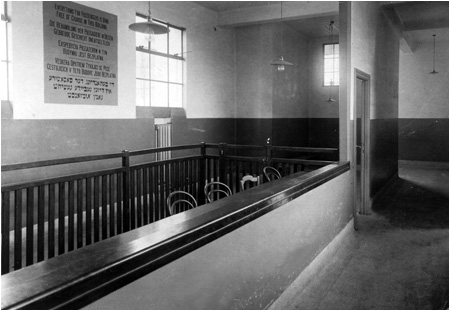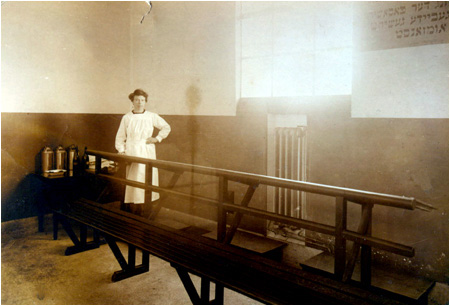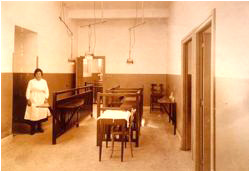The Red Star Line at the embarkation sheds.
A dilapidated complex of three brick-red buildings faces the Rijnkaai (Rhine landing stage), a section of the docks in the old Antwerp harbor district.
For more than sixty years the Red Star Line ocean steamers moored right there.
 They took on passengers by the hundreds from all over continental Europe, all pursuing the American Dream.
Although the Red Star Line departure halls are in ruins now, the Flemish government decided to classify them to honor the stories behind these buildings, the stories of the countless emigrants who took their last few steps on European soil in Antwerp.
Before boarding, their luggage was decontaminated in the complex and they were subjected to a medical inspection.
They took on passengers by the hundreds from all over continental Europe, all pursuing the American Dream.
Although the Red Star Line departure halls are in ruins now, the Flemish government decided to classify them to honor the stories behind these buildings, the stories of the countless emigrants who took their last few steps on European soil in Antwerp.
Before boarding, their luggage was decontaminated in the complex and they were subjected to a medical inspection.
The oldest part goes back to 1894. It was built by the Red Star Line at the urging of the authorities. Complaints had been pouring in for years about the conditions in which migrants were inspected before their departure. Inspections took place rain or shine on deck or on the landing stage, or else in stifling sheds.
It was in Red Star Lineís best interest to inspect its steerage passengers in Antwerp. Anyone who didn't pass inspection on arrival in the US was deported at the cost of the shipping company.
 The shed also contained a steam installation for fumigation of luggage and clothes. Cholera epidemics had caused the authorities to be suspicious of migrants from the Russian Empire, as they were worried that these migrants might be carriers of the bacteria.
The shed also contained a steam installation for fumigation of luggage and clothes. Cholera epidemics had caused the authorities to be suspicious of migrants from the Russian Empire, as they were worried that these migrants might be carriers of the bacteria.
Besides passengers, the Red Star Line ships also transported a lot of cargo.
In 1912 a municipal customs office was set up right next to the shipping company shed. Over the years it became an integral part of the Red Star Line complex.
In 1921 and 1922 Red Star Line built a new two-story wing for emigrants.
The steam installation now consisted of six high-pressure chambers, autoclaves, where passengersí luggage and clothes were decontaminated.
There were also separate showers for men and women. On top of that, everyone was deloused with benzene and vinegar.

The medical inspection took place on the second floor.
There were several different physicians: the Red Star Line doctor and the American and Canadian inspection doctors. Among other things, they looked for traces of trachoma (a contagious eye disease) and evaluated whether passengers were physically able to provide for their own needs.
After the Red Star Line, the complex was used for various purposes, such as a recruiting office for dock workers, a warehouse for trucks and cranes, a workshop for restoring ships and a theater hall. It gradually decayed, until the city bought the complex in 2004. The New York architectural firm Beyer Blinder Belle, whose portfolio includes Ellis Island and Grand Central Station, has signed on for the restoration
Source: http://www.redstarline.org
|
